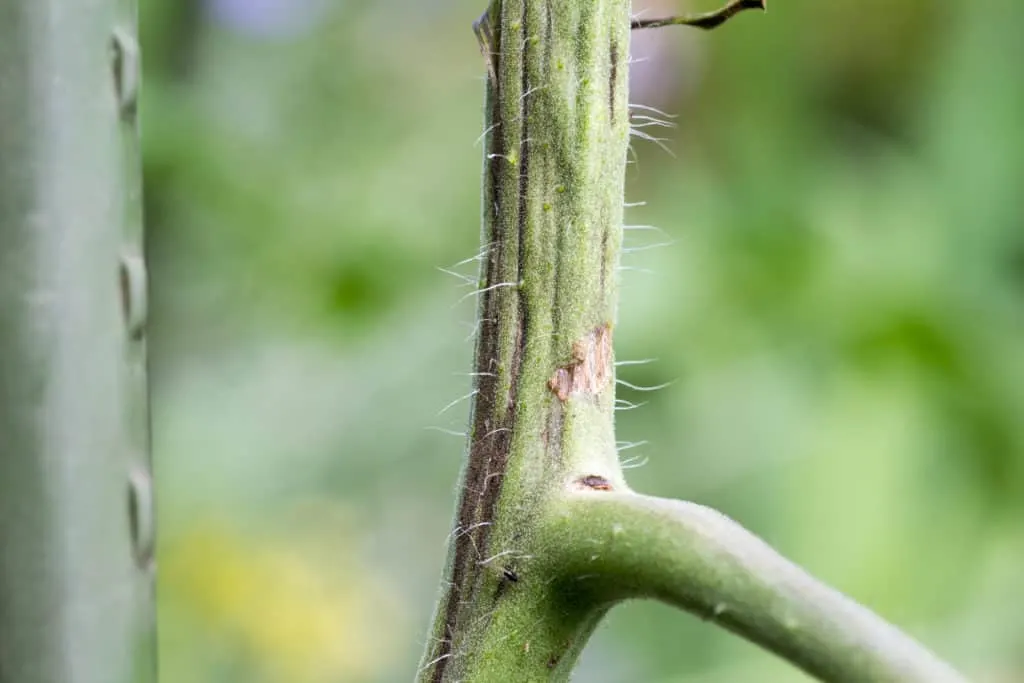
The unfortunate fact of tomato growing is that most gardeners will face a tomato plant problem at some point in the season.
Problems are normally identified by the look of the plant – wilting branches or yellowing leaves. When checking our plants for potential problems, we often overlook the center of the whole process – the stem.
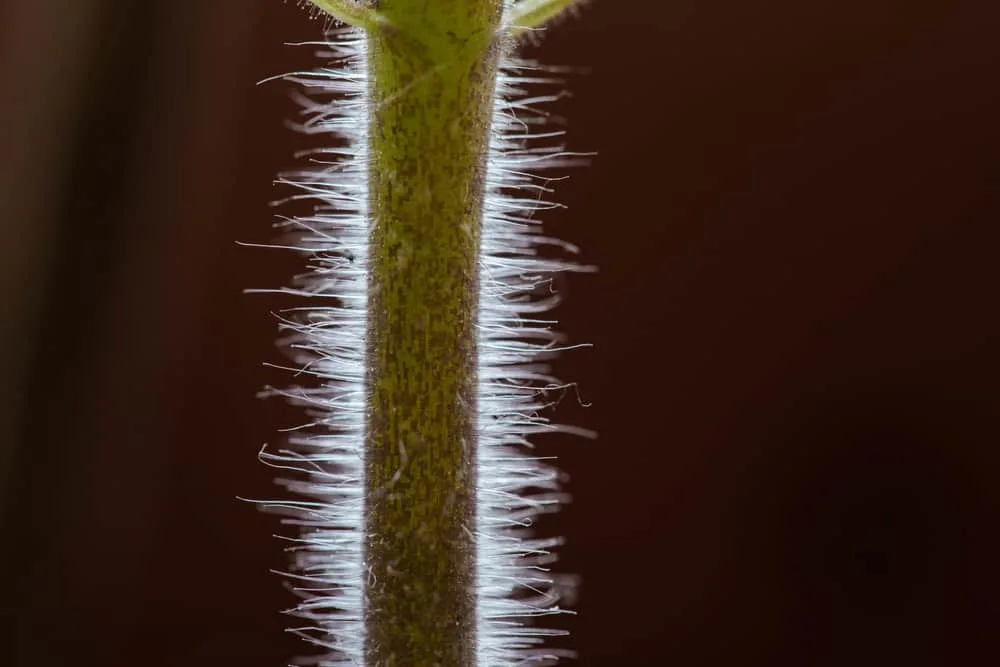
Tomato stem problems tend to go unnoticed until they are completely out of hand. Dense leaf growth and our focus on the fruits distract from this essential transport system that, along with the roots, makes fruit production possible.
Take some time during your regular care schedule to check for these five tomato stem problems. The sooner you identify the problem, the sooner you can work toward getting your plant back in shape and ready for production.
1. Dark Spots or Streaks
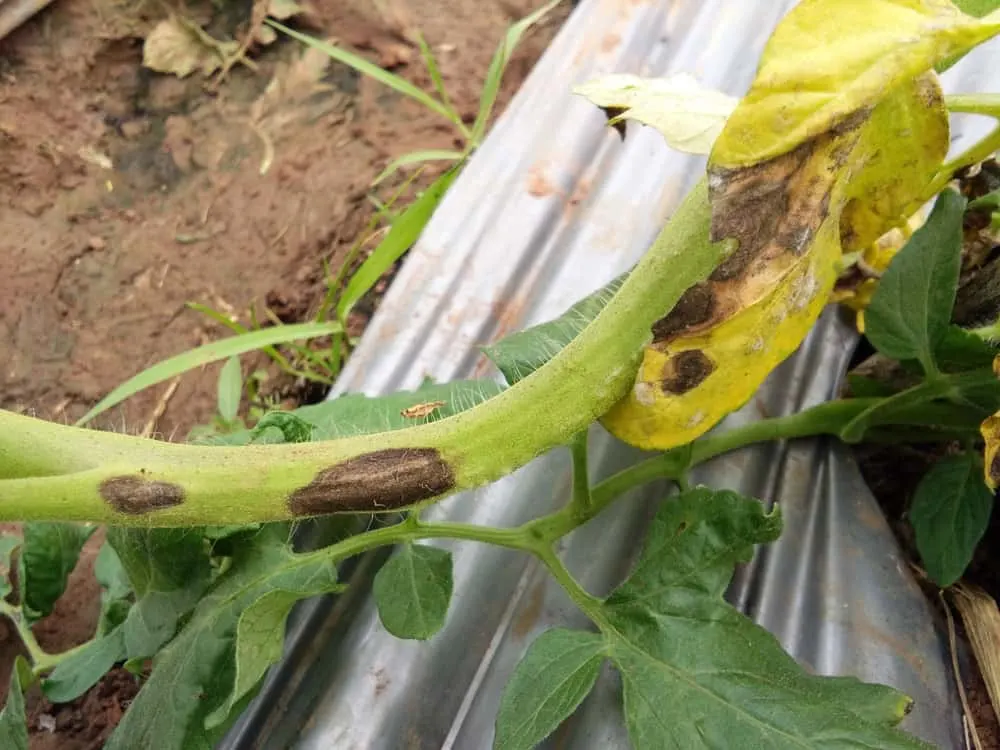
Starting with the most panic-inducing problem, we have black spots or streaks along the tomato stems. As black spots are associated with rotting, finding a black spot on your plant can understandably cause serious alarm. Luckily, most causes for this common problem are treatable.
The first and most likely causes are early or late blight. Early blight, caused by the fungus Alternaria solani, is identified by dark brown or black spots on all parts of the part, including the stem. The spots normally appear on the stem just above the soil line. Early blight is unfortunately a common problem for tomato gardeners, but this comes with the benefit of easy treatment. Simply remove all infected leaves and apply a fungicide designed to tackle early blight.
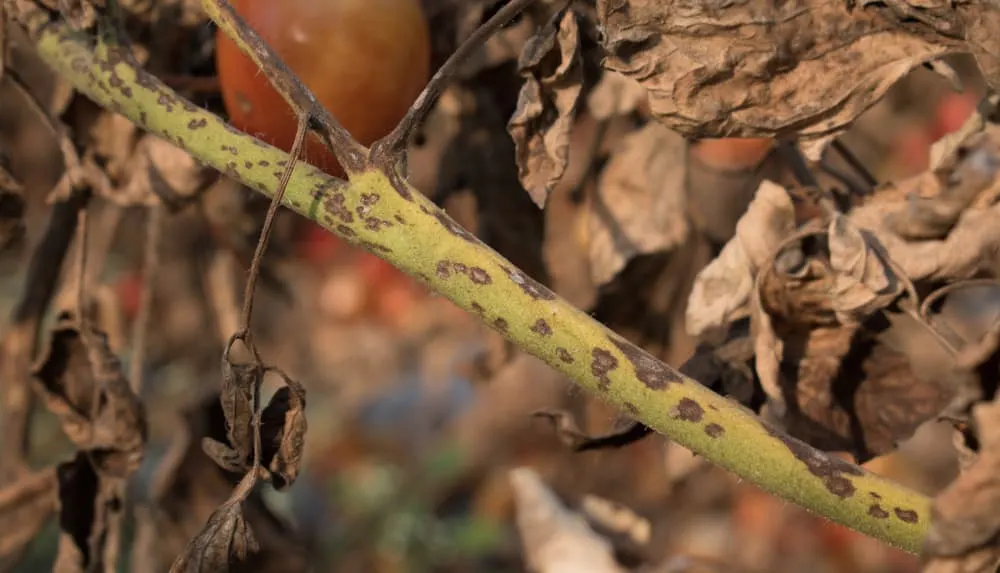
Late blight is much more dangerous. Dark black or purple spots spread from the leaves to the stems remarkably quickly, indicating the imminent demise of your tomato plants.
Unlike early blight which can be resolved if discovered early on, any plants showing confirmed signs of late blight should be pulled from the garden and destroyed to prevent any spread to other plants in your garden.
2. Lesions
If the dark spot looks more like a lesion than discoloration, you may be dealing with Alternaria stem canker or bacterial canker.
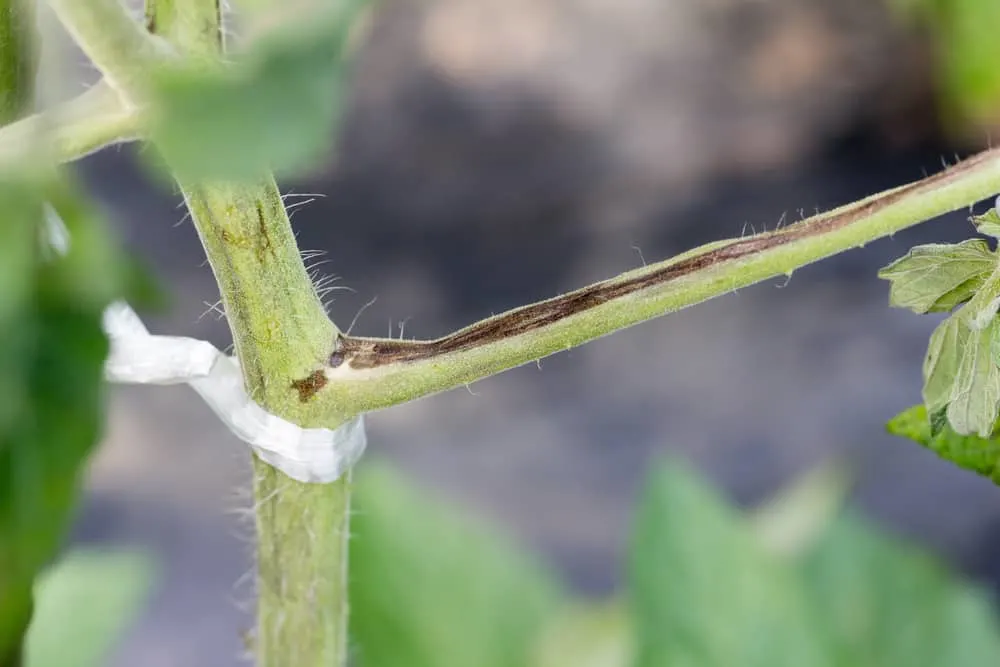
Alternaria stem canker is not particularly common among homegrown tomato plants, but it’s not impossible to come across. Dark cankers form along the stem of the plant, slowing enlarging outwards in rings as the disease progresses. Like many serious fungal diseases, Alternaria stem canker is difficult to control. Once it’s discovered, it’s best to pull the plants from the garden.
Another potential culprit is bacterial canker. In the stems, it can be identified by brown spots or streaks in lesions. Like late blight, there is no known cure for this disease. The best defense against bacterial canker is prevention. Plant disease-resistant tomato varieties, practice crop rotation, keep the beds free of weeds.
3. Bumps
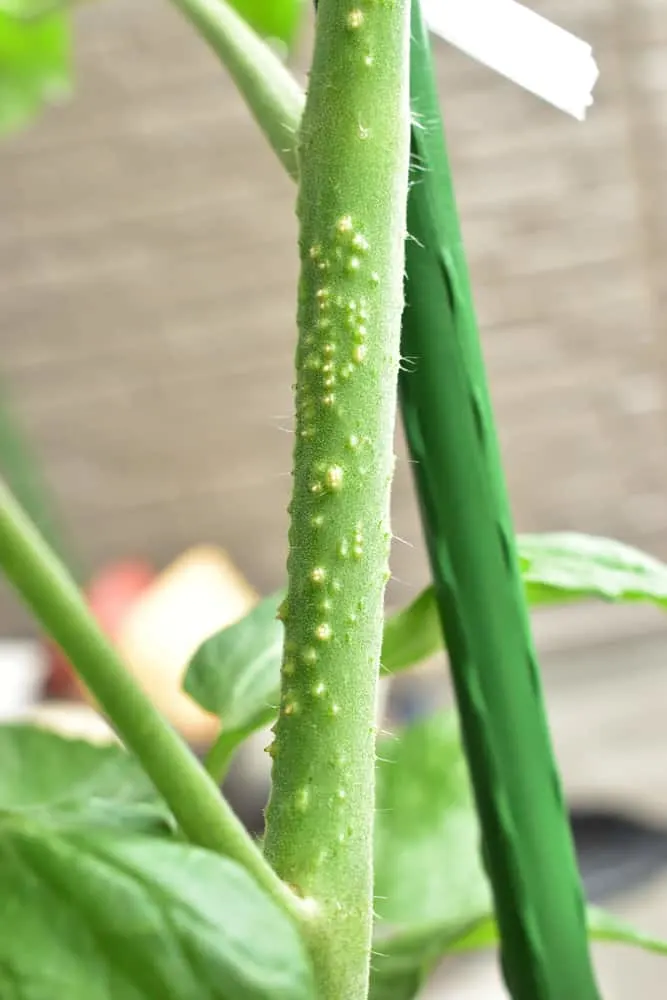
Tomato stems often develop small white or brown bumps on the stems. These small growths may look dangerous, but they are completely normal and are usually no cause for alarm.
The white bumps are actually roots. Or, to be exact, the first stage of a root. The nodules are called root initials and emerge along the stem where the plant would produce roots if it was underground.
Root initials typically develop when the plant is under stress. This stress can be caused by a number of factors, but the answer is typically overwatering. This causes a problem with the plant’s internal transport system, resulting in a blockage that causes the nodules to emerge.
The bumps can also form after exposure to a herbicide. If there are other signs of herbicide exposure present on the plant, such as curling leaves, that may be the cause.
Bumps on tomato stems do not require treatment as they are not intrinsically harmful. But it’s important to identify the cause of the stress in your tomato plants that resulted in the bumps. Once you’ve identified the root of the problem (excuse the pun), you’ll be able to fix the stressor and return the plant to good health.
4. Cracking
Tomato gardeners may search for a number of culprits when they notice cracked tomato stems, overlooking the obvious cause – wind.
Most tomato plants need supports to hold the weight of the plant and prevent it from snapping or falling over. Without supports, even a slight breeze can place too much pressure on the tomato stem, causing it to crack.
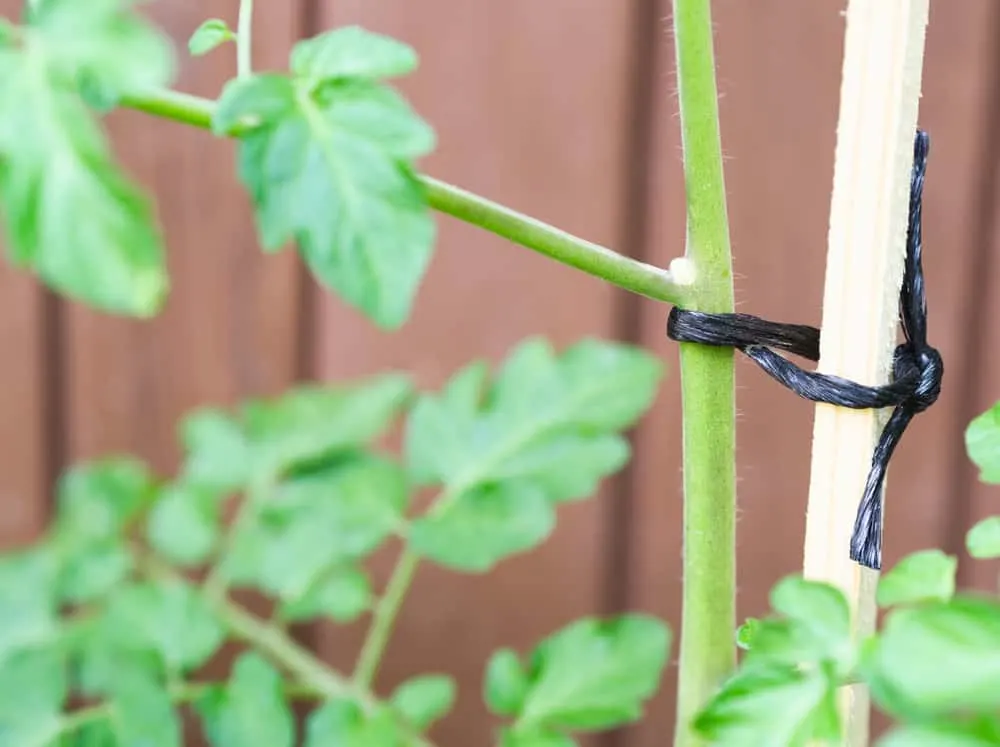
Another common cause is overwatering. If the plant takes up too much water through the stem, the pressure can cause the stem to split vertically. However, the plant will likely show signs of overwatering long before a split stem.
Depending on the site of the split, the tomato plant may repair itself without any adverse effects. Hold the plant upright and reattach it to the supports, it should heal up over time. If the crack does not appear on the main stem, and that stem is not holding any fruits, simply prune the stem.
5. White Spots
Dark spots are not the only cause for concern – white spots are equally as alarming, if not more so. White spots on tomato leaves are commonly caused by powdery mildew, which can affect the stems too, but not as intensely.
Timber rot or sclerotinia stem rot, on the other hand, presents first on the stems (as the name suggests). Stems develop lesions covered in white, fluffy mold near the base of the plant.
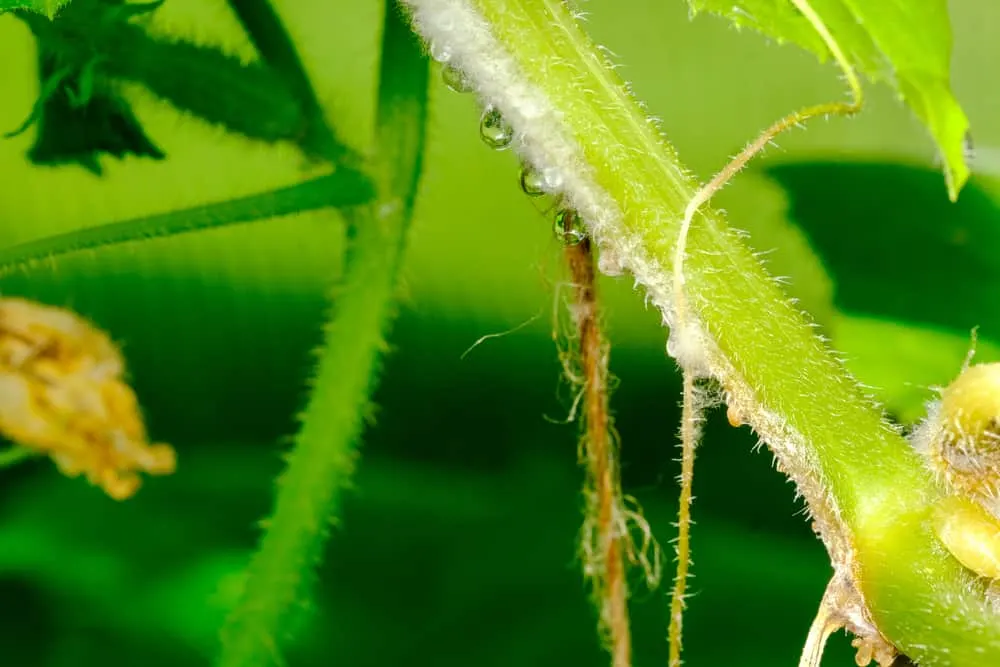
Cold, wet conditions encourage this fungal disease to spread, which is made worse by inadequate aeration around the plant.
Although timber rot is more common in large-scale tomato production, it does often impact home gardeners.
Once the disease is identified, the plant should be removed and destroyed immediately. Not only is this disease incredibly dangerous to many plants in your garden and easily spread, but it can also remain in the soil for up to 10 years, making it almost impossible to get rid of.
Practice good garden hygiene by sanitizing all tools and completely destroying any affected plants. Ensure the soil has adequate drainage before planting and space the plants apart for greater aeration between the leaves.
